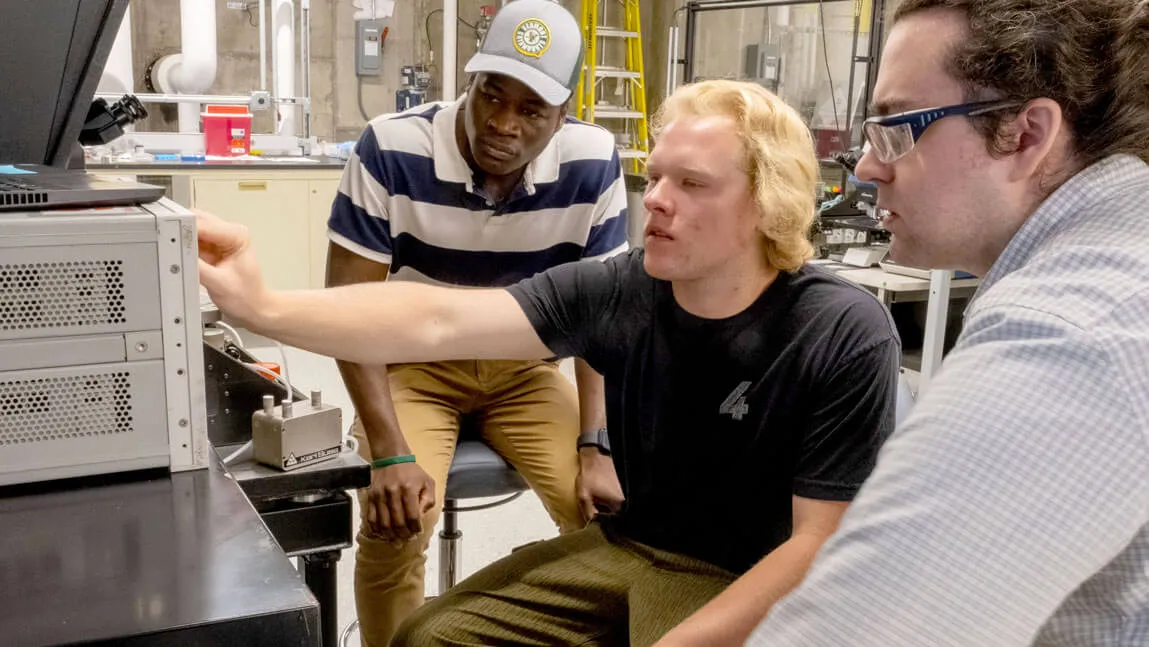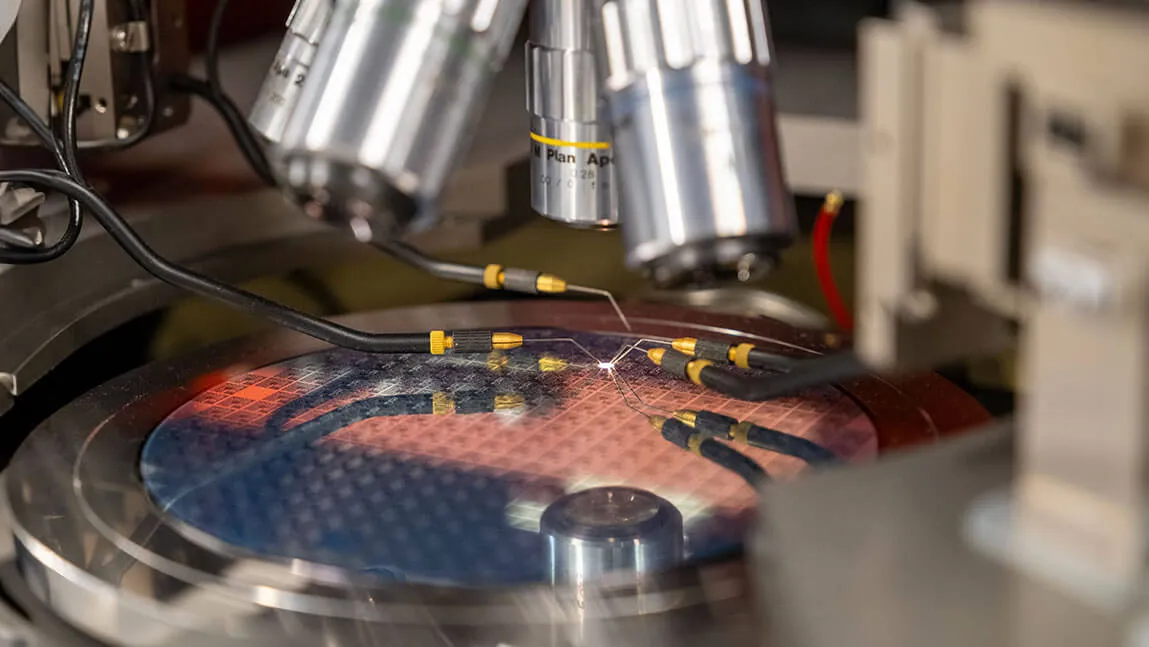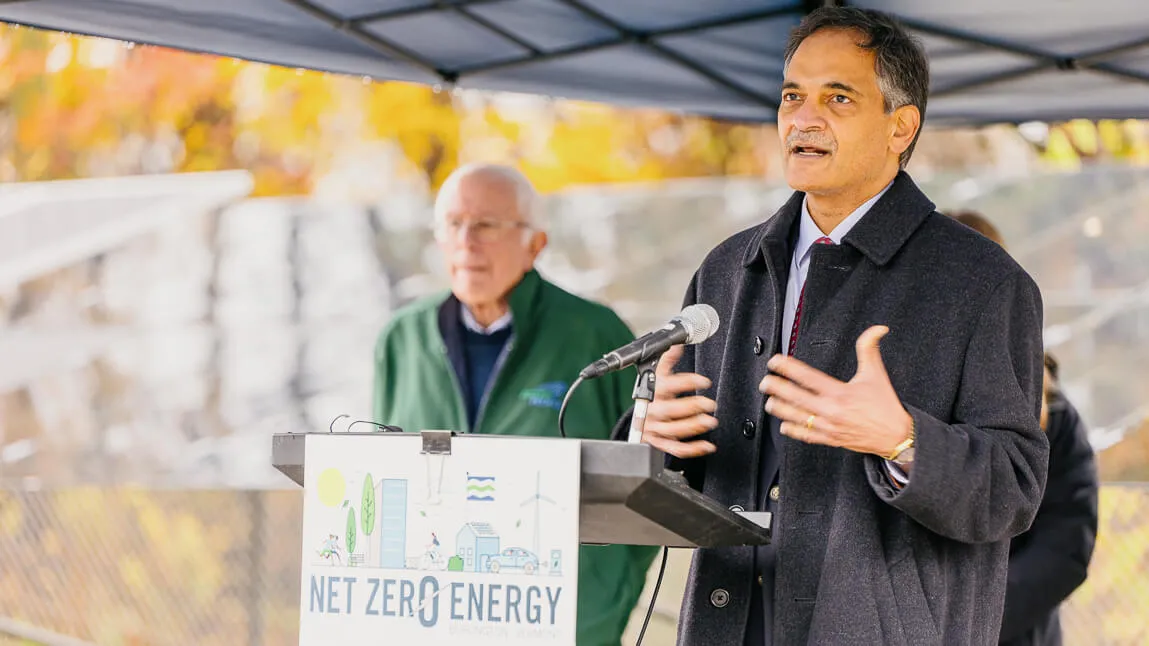The faculty of the former Electrical Engineering (EE) program in the College of Engineering and Mathematical Sciences (CEMS) has recently voted to adopt a new name— the Electrical and Computer Engineering (ECE) Program—that better reflects the scope and breadth of the undergraduate curriculum and highlights the importance of computer engineering as a core research and hands-on learning opportunity for students studying to become electrical engineers.
“Our faculty recognizes that computer engineering—which blends aspects of electrical engineering with computer science—is a highly sought-after combination of skills for which there is a critical need in the modern workforce,” said Marilyn J. Cipolla, Chair of the Electrical and Biomedical Engineering Department (EBE) where the program will continue to be housed.
Cipolla added that the faculty within the Electrical and Computer Engineering program are internationally recognized for their research in areas that heavily involve computer engineering, but that this expertise was not well-reflected in the program’s existing name.
The Electrical and Computer Engineering program allows students to select a specific area of concentration if they choose to. They can collaborate with faculty on research and take courses within specific areas of expertise in the department. These include Power and Energy Systems, Autonomous Systems, and Computer and Semiconductor Engineering. All students still earn a degree in electrical engineering, but they can opt to concentrate on one of those three areas.
The timing of the name update coincides with growing momentum for expanded research investment in these fields at the University of Vermont and with industry partners throughout the state and nation.
This past October, a ribbon-cutting ceremony celebrated the growing partnership between CEMS and Vermont-based semiconductor manufacturer, GlobalFoundries. The company expanded its support of CEMS-led research and curriculum development in semiconductors through the donation of sophisticated testing and evaluation equipment to create the first Device Characterization teaching lab in the state.
“It is unusual for undergraduate students to be able to get their hands on these state-of-the-art instruments that would normally be only found in an industrial research laboratory,” said Matt Gallagher, a lecturer in the Electrical and Computer Engineering Program who helped coordinate the equipment donation from GlobalFoundries and taught the first course in the lab this past fall. “We're opening up these resources to undergraduate students interested in studying computer engineering.”
As a result of having access to the lab’s equipment, the Electrical and Computer Engineering program was able to collaborate with the Physics Department last fall to create the College’s first undergraduate certificate in Semiconductor Engineering and Physics with a graduate certificate in the field planned for the near future.
Later that same month, President Biden announced that a consortium led by the University of Vermont and including GlobalFoundries and the State of Vermont had been designated as one of 31 Tech Hubs by the U.S. Department of Commerce’s Economic Development Administration (EDA), unlocking the potential for up to $75M in federal grant funding to further research in semiconductor technology. Selected from nearly 400 applications, the Burlington-area hub will focus on advancing Gallium Nitride (GaN) semiconductor technology.
During the same timeframe as these developments in semiconductor research, the Vermont Electric Power Company (VELCO)—which operates the state’s electric transmission grid—signed a five-year strategic agreement with UVM to advance use-inspired research to better ensure a more resilient, affordable, and sustainable transmission system as Vermont transitions towards a clean energy future.
The strategic agreement will support the development of UVM’s NES2T (Next-gen Energy Systems Simulation Technology) lab, which will support the evaluation of complex what-if scenarios on a “digital twin” of the Vermont power system. The lab will further leverage UVM’s innovative power systems research and VELCO’s real-time data to improve the grid’s performance as the state brings additional renewable energy sources online and demand both increases and fluctuates as consumers electrify their vehicles and homes.
The unique arrangement underscores the close academic relationship between electrical engineering and computer science where many of the challenges involving complex energy scenarios are computational and require advanced simulations where researchers develop the algorithms that will solve hard physics problems faster.
“What's exciting at this moment—especially with the rise of machine learning—is that we're seeing many new computer architectures that are hardware devices and chips whose technology has been driven by algorithmic advances in the realm of computer science,” said Sam Chevalier, a faculty member in the Electrical and Computer Engineering program whose research focuses on energy systems and power grids. “There is currently an exciting interchange between the hardware, the software, and the algorithms that several members of the UVM faculty sit at the intersection of.”
As part of the name change process, the program will introduce a new course prefix, CMPE, to better identify courses that are aligned with the computer engineering areas of focus and curriculum. A subset of existing courses from the EE catalog (such as Digital Design, Embedded Programming in C, and Microcontroller Systems) will be given the new “CMPE” prefix. It will form the foundation courses for Computer Engineering, which both ECE and Computer Science students are likely to take.
To assess the impact of the ECE name change and related curriculum adjustments, the Department will track student credit hours for the programs as well as for the majors in Electrical Engineering and Computer Science. Based on the findings, the program may explore expanded actions in the future such as investigating a minor in Computer Engineering and new faculty investments.


